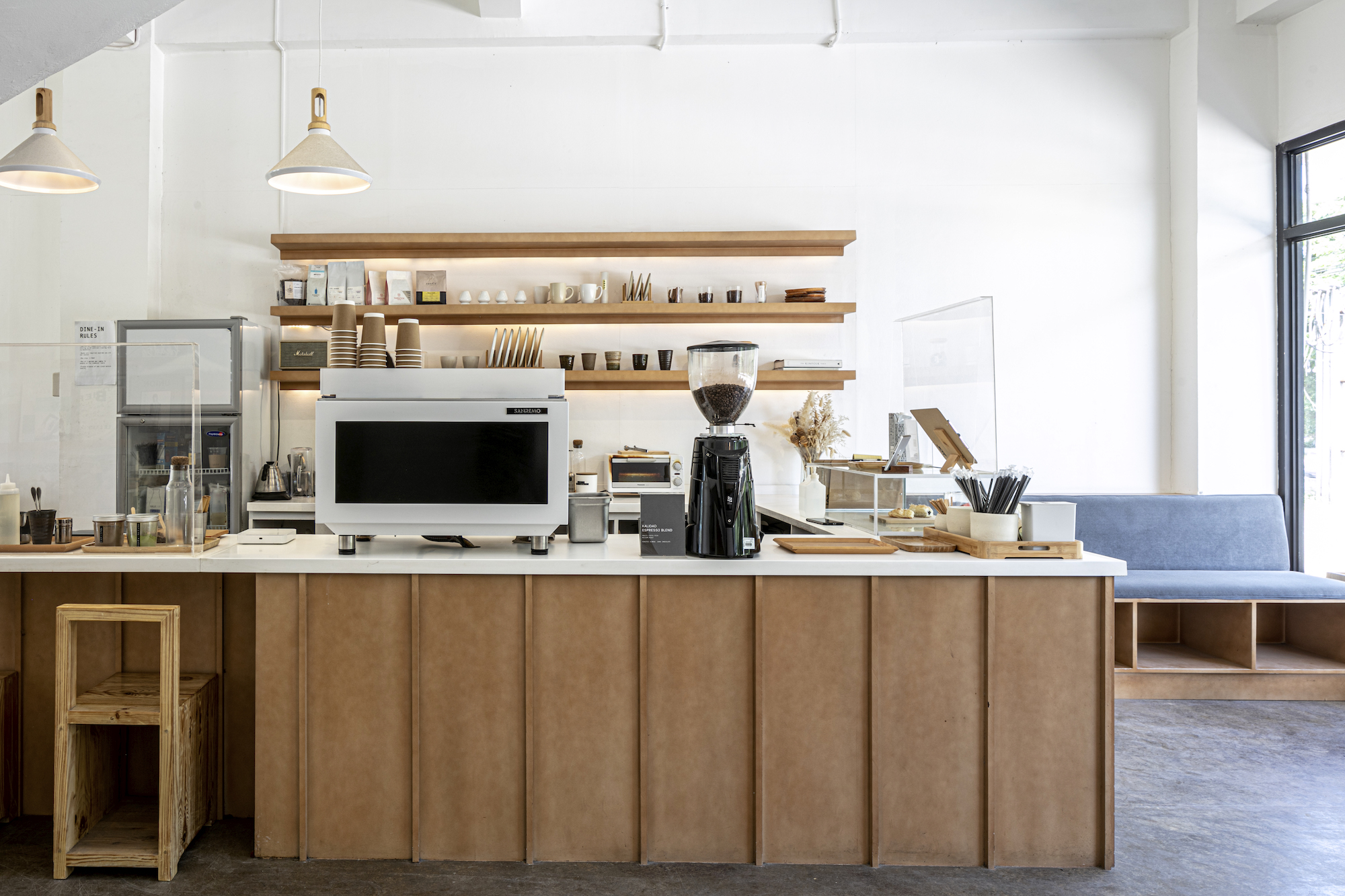Capitalizing on a cafe business opportunity during COVID-19 is a stark reminder that life doesn’t stop for anyone. Times may have changed, but the focus remains the same: Build a business that serves the market with genuinely good products and fresh perspectives, and invest in all the right things.
That’s exactly what these enlightened entrepreneurs did in the middle of a pandemic.
If you’re looking for some serious inspiration to up your coffee game, you’ve come to the right place as we scour three cafes and chat with the talented minds behind them on what it’s like to open, operate, and survive a brick and mortar in these times.
Kalidad Coffee
Kalidad Coffee, built by 25-year-old Niccolo Yabut, is a stark and minimalist cafe in Angeles, Pampanga serving specialty coffee.
What are the challenges of opening a physical cafe during a pandemic?
For starters, we had to continually pay full rent even though we weren’t allowed to operate for a few months. I remember bringing our espresso machine home a day after they announced the first lockdown and personally delivering bottled drinks just to make ends meet.
“Design is equally as important when it comes to the cafe. After all, the look and feel is one of the first things customers experience when walking into the cafe and is also what draws them in,” says Niccolo Yabut.
While COVID-19 protocols have been continuously changing, we’ve also been navigating new daily operations and figuring out how we can stay open (safely, of course) while fighting our own nagging feelings of fear and overwhelm.
How important is design when it comes to brick and mortars?
I can’t count how many times I’ve seen a customer’s drink melt away as they worked on getting the perfect Instagram shot (laughs). As important as our drinks are, design is equally as important when it comes to the cafe. After all, the look and feel is one of the first things customers experience when walking into the cafe and is also what draws them in.
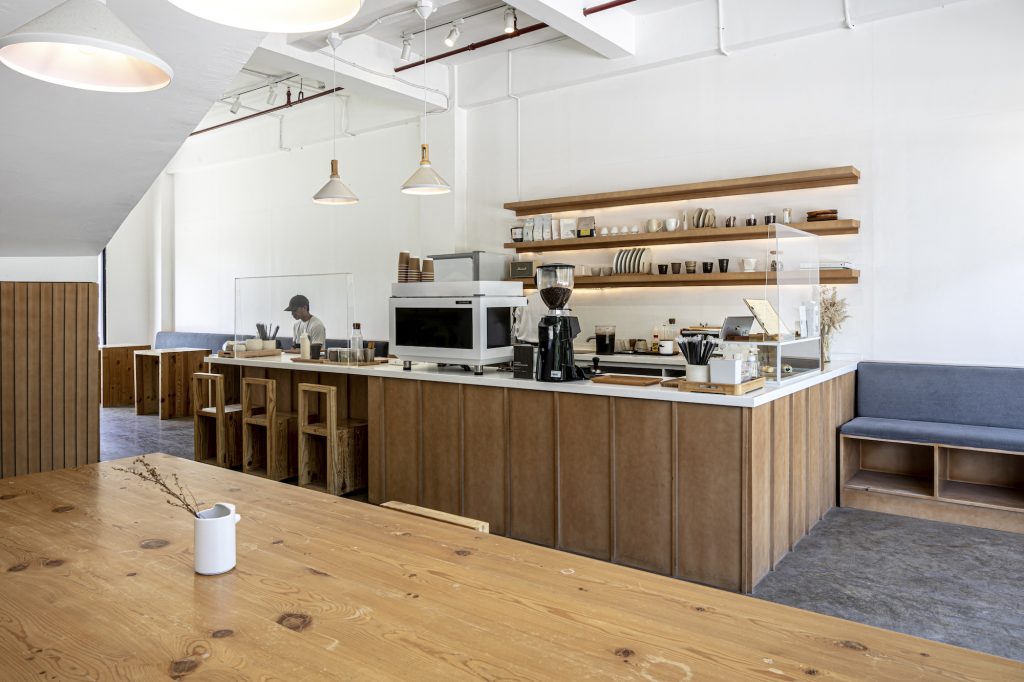
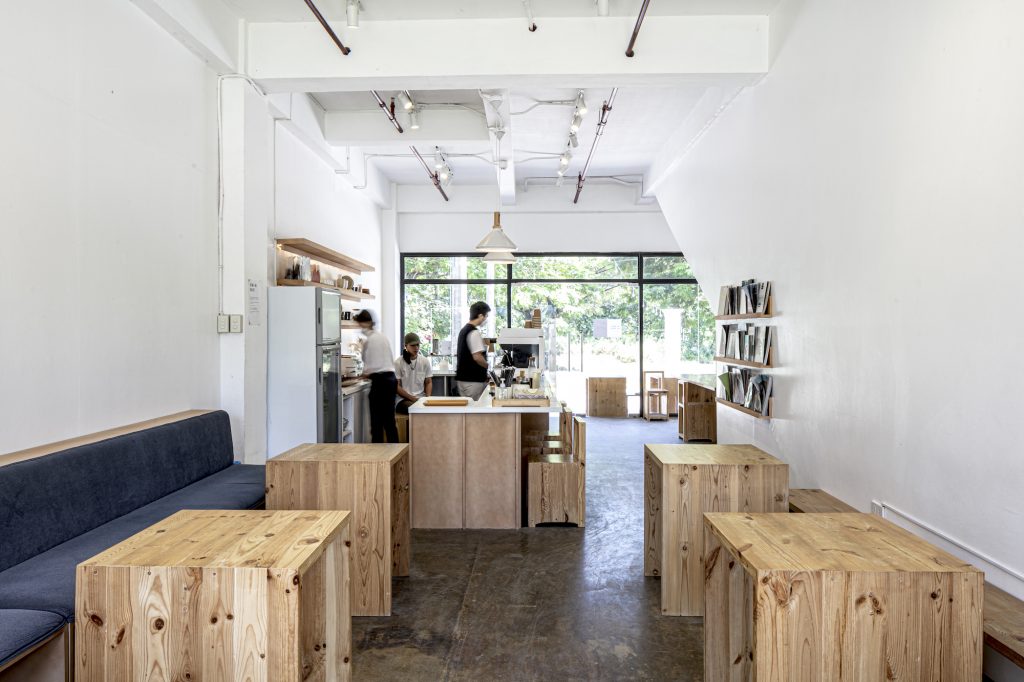
I worked with Jeric Rustia, a fellow small business owner of 393 Projects, to create an intentional space that would foster conversation and productivity. For example, our tables were measured to give a person enough of their own space, yet close enough for an intimate conversation.
Even our seating was designed with a purpose in mind. The spaces you see beneath them are meant to be used as extra storage for your bags, since we’re limited in space. If you look closely, every little detail was made with intention and purpose.
What new consumer habits do you foresee in regard to coffee consumption and how are you preparing for this?
I noticed that people have become more thoughtful with where they spend their money. When people buy a drink from our cafe, they aren’t just getting coffee, but they also get to support the dreams of the people behind it.
We’ve seen a true movement of community support this past year and I think this will continue post-pandemic. Through hosting small business pop-ups and showcasing artists from our local community, we are creating a shift in our customer’s outlook towards coffee and consumption.

We also now offer takeout, which is something that wasn’t originally part of our business plan just yet because I wanted to figure out how to do so in a more sustainable manner. I know we’re not fully there yet, but a small way we’ve been trying to integrate this is through our packaging (e.g. glass bottles and strawless cups).
In the near future I’d like to work on fully integrating sustainability in all aspects of our cafe and I think more coffee shops will realize that this is the next move with such a high demand for takeout.
How do you envision the meaning of “cafe” in the post-pandemic world?
From catching up with an old friend to having a solemn day working on your laptop, there’s something special about sharing time and space with other people. Post-pandemic, I hope that people will remember the experience and comfort that our cafe, and hopefully other cafes, were able to bring to them.
“People have become more thoughtful with where they spend their money. When people buy a drink from our cafe, they aren’t just getting coffee, but they also get to support the dreams of the people behind it.”
Any advice you can share to entrepreneurs navigating this crisis?
Prepare for shutdowns. Stock up on takeout supplies and find ways to stay accessible to your customers. Make sure to prioritize your people. It might set back your business but it’s important you put your well-being and everyone else first because it’ll be better in the long run.
Prepare for slower business days. Remember, you’re operating during different times, which means you can’t expect your business to run as it would pre-pandemic, but that’s okay.

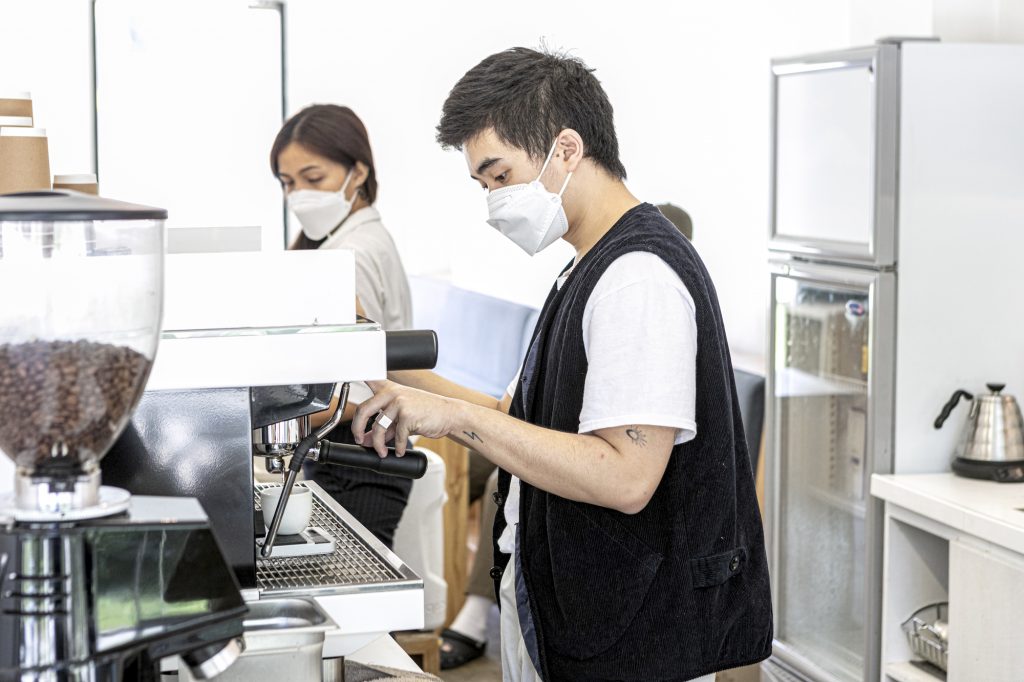
Izu Koffee
Izu Koffee, owned by Carlo Izumiya, Marie Streegan, and Kristen Iloseo, is a bright neighborhood coffee shop in Las Piñas that enlisted designer Giana Gatan to help bring their ideas to life.
What are the challenges of opening a physical cafe during a pandemic?
Marie Streegan: It was a big gamble for us. The cost alone during something so uncertain was a risk. But the challenges we had were really more the ECQ-related ones and lockdowns. We’ve had delays with deliveries, supplies, and materials. Even the mobility of the construction team was affected. Of course, if there’s a lockdown, the carpenters couldn’t move around. Processing government papers and permits were also delayed.
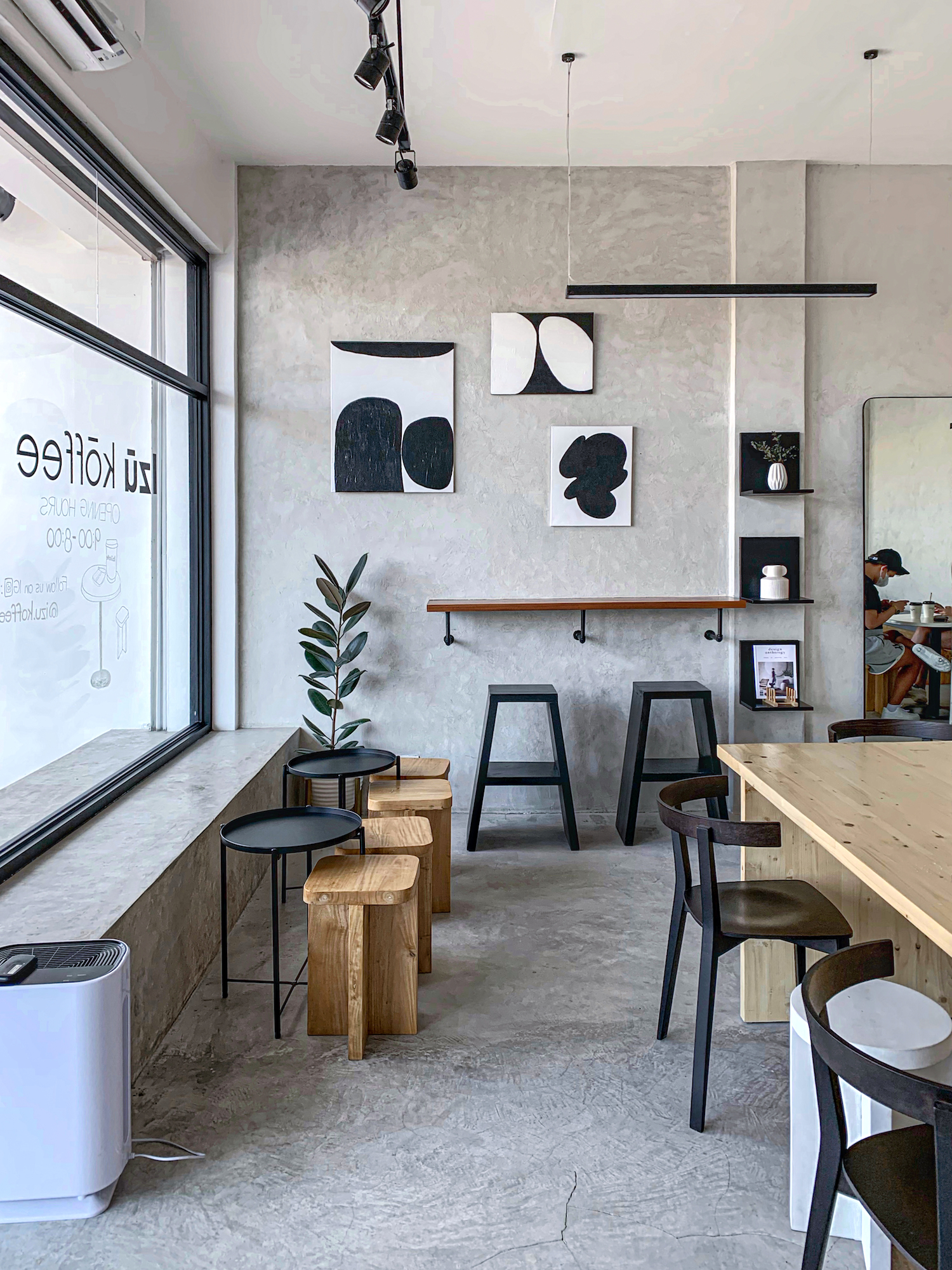
When we opened, the limitations of capacity of the place was also a challenge. The capacity of our cafe is 30. So at the time, the government was only allowing 10 percent capacity, which meant only three people could dine in. It wasn’t viable for us to operate. So it was a good thing we thought about building a takeout counter and also an outdoor bench, which provided extra space for us.

How important is design when it comes to brick and mortars?
Streegan: We believe that drinking coffee is a sensory experience, and along with it, you experience the aesthetics of the place. Even though some things came out to be more expensive than we planned it to be, we went for it because we really wanted the place to be clean and uncluttered.
Carlo Izumiya: Not everyone wants to get coffee, but we noticed everyone wants to post a story on Instagram. And the interiors can reel people in.
“I’ve noticed a lot more consumers supporting local coffee shops. The local coffee shop scene is having a real moment,” says Carlo Izumiya.
What new consumer habits do you foresee in regard to coffee consumption and how are you preparing for this?
Izumiya: I’ve noticed a lot more consumers supporting local coffee shops. The local coffee shop scene is having a real moment. We source local roasters and we serve specialty coffee, and it seems that that’s what people want.
If you’re curious about coffee, we’re so open to explaining the stuff we’re doing. That’s why we put two chairs near the brewing area so you can watch the barista make coffee. We want to educate the people, too. So that space is there so we can connect with each other. So many people are asking questions and are curious about coffee.

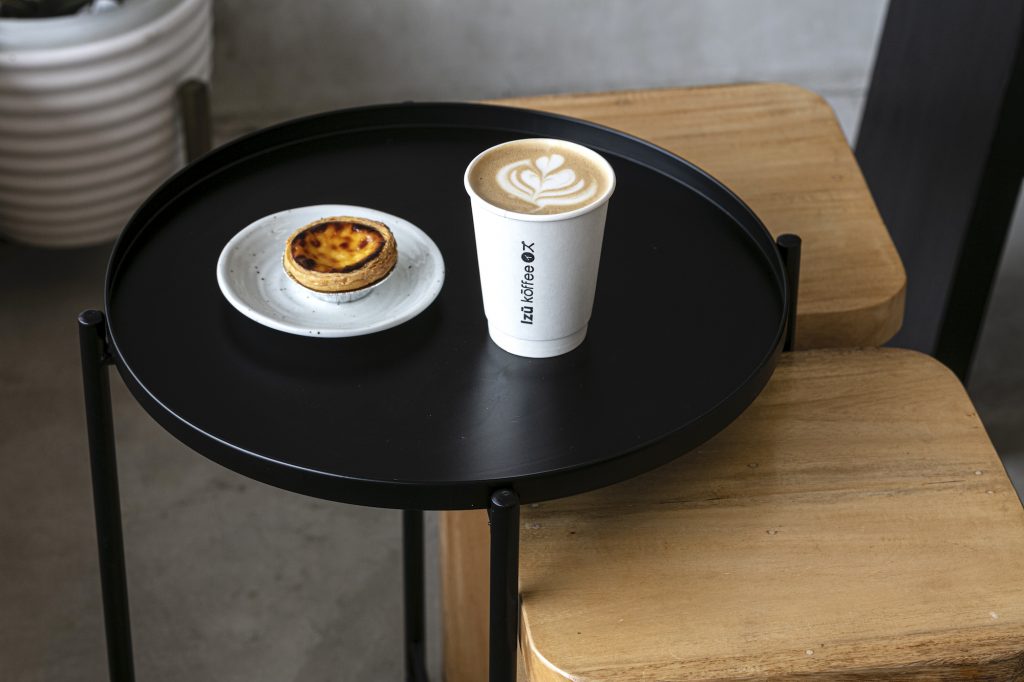
Streegan: Our customers also ask if we sell our beans. We feel that a lot of people also want to enjoy coffee in their homes and it is a trend we’re seeing a lot.
How do you envision the meaning of “cafe” in the post-pandemic world?
Streegan: In the near future, there may be less contact still. And yes, ordering coffee online may not go away, but the experience of drinking coffee at a cafe will always be there.
Izumiya: We hope that our space can bring more people together in the future. We can host cupping sessions and educate people about coffee.
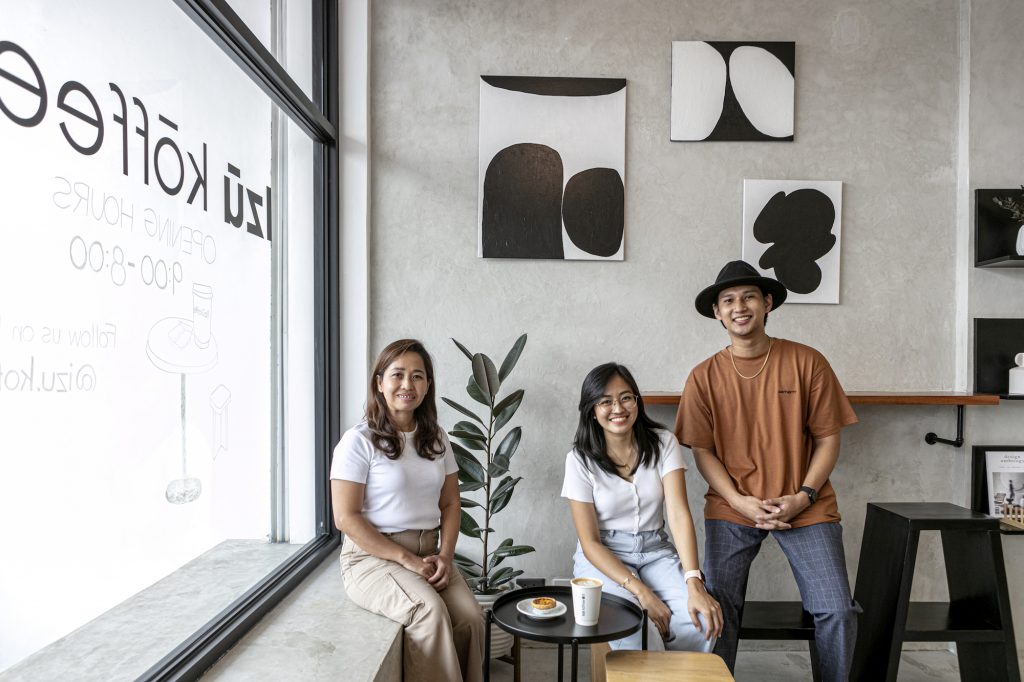
Any advice you can share to entrepreneurs navigating this crisis?
Izumiya: One advice I tell my friends: Planning is free. Plan as much as you can. Once you do that, you can talk to professionals who are experts at their craft.
Streegan: Listen to your customers. In the three weeks we’ve been operating, we learned so much and tweaked things because of our customers. And they work.
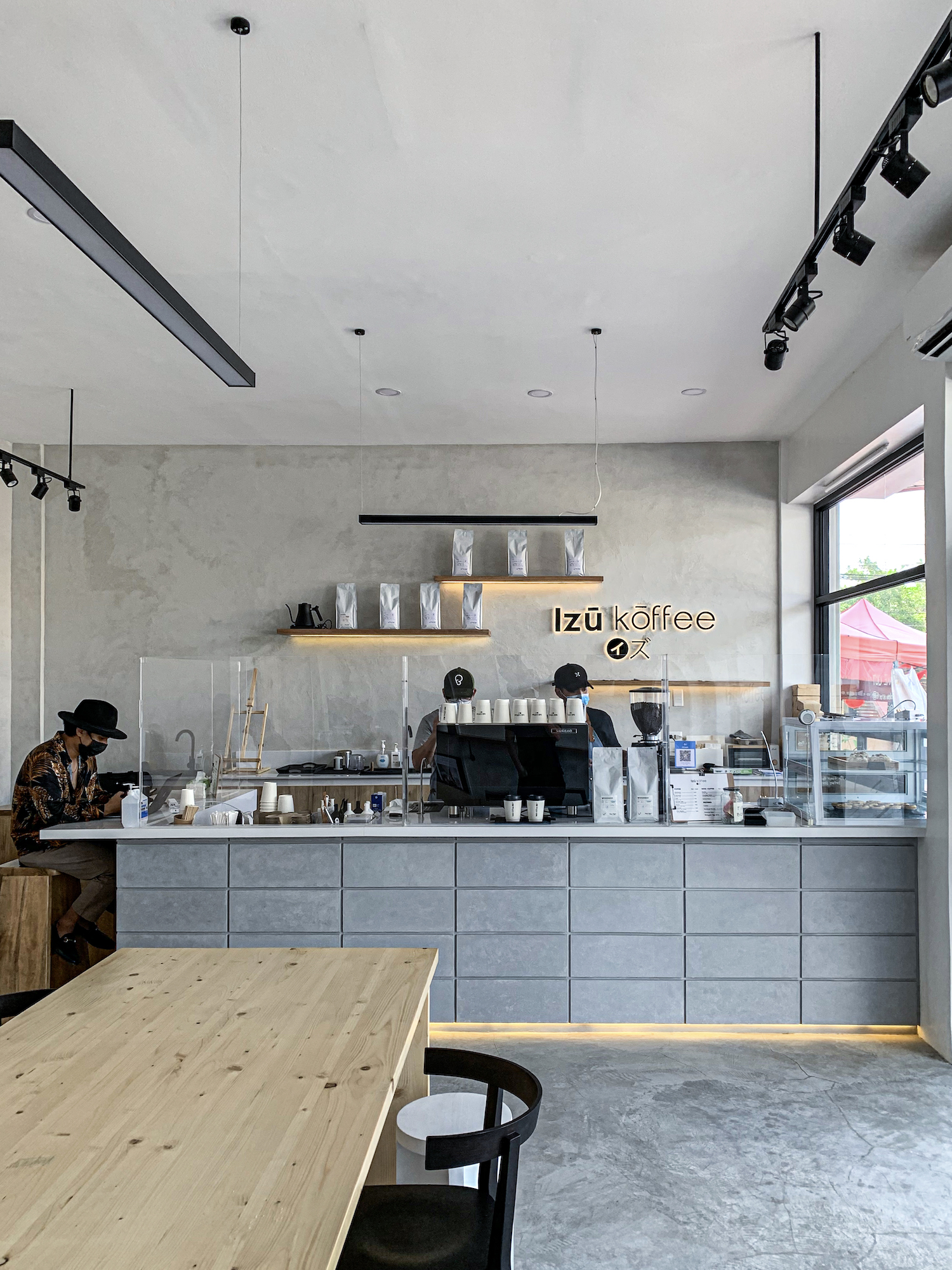
The Coffee Academics
The Coffee Academics in the middle of Bonifacio Global City, owned by Myles Hontiveros, offers the Hong Kong coffee brand’s signature lattes and branch-exclusive croissants.
What are the challenges of opening a physical cafe during a pandemic?
Myles Hontiveros: Whether we sell one cup of coffee or a hundred, we still have to pay our employees their full wages. Another thing is that a lot of people are still afraid to go outside, so it’s hard for us to give the experience and explain what we’re doing and why we’re doing it. Even just talking to the customer face to face is already an experience—and that’s what we want to do.
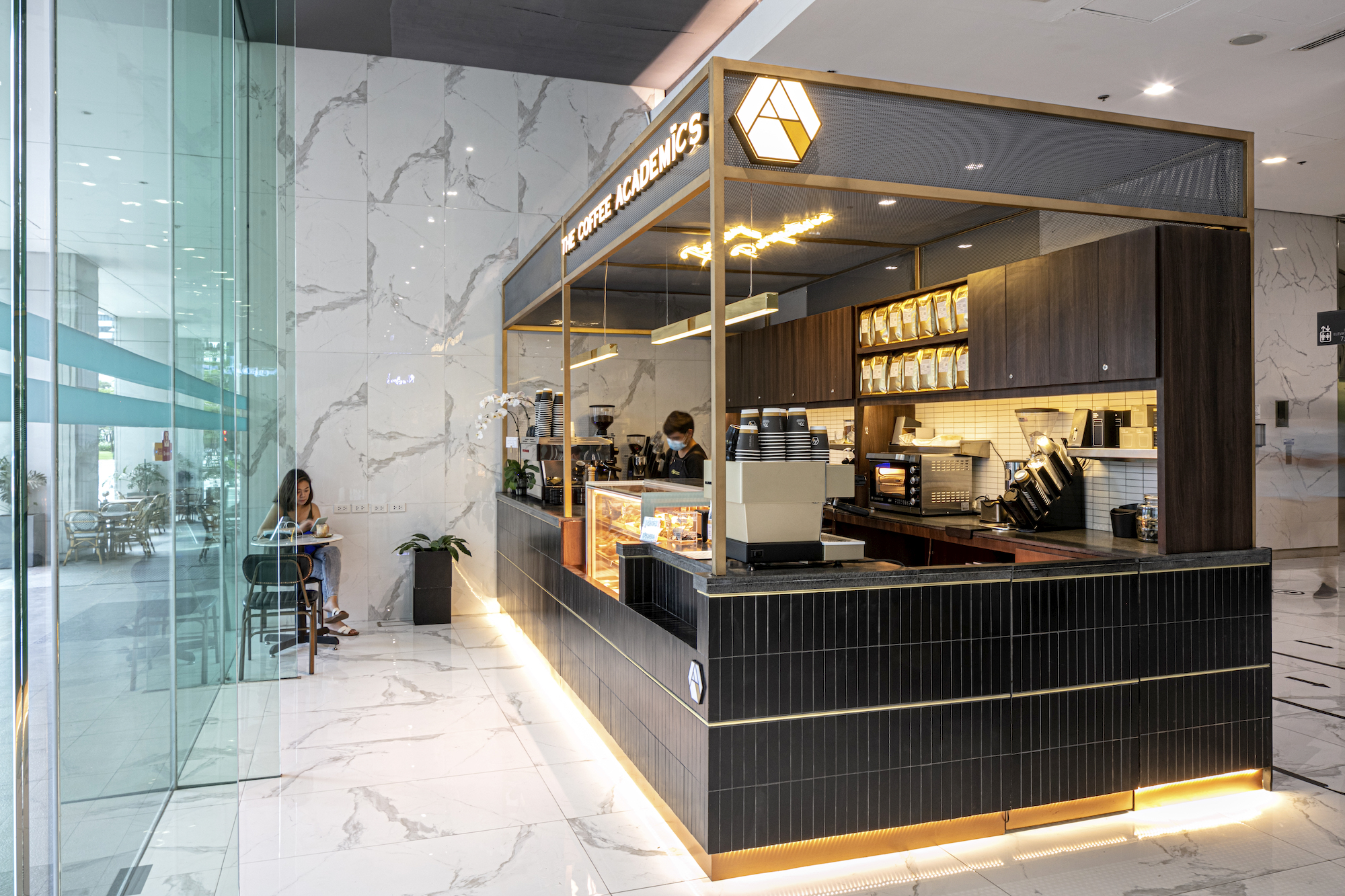
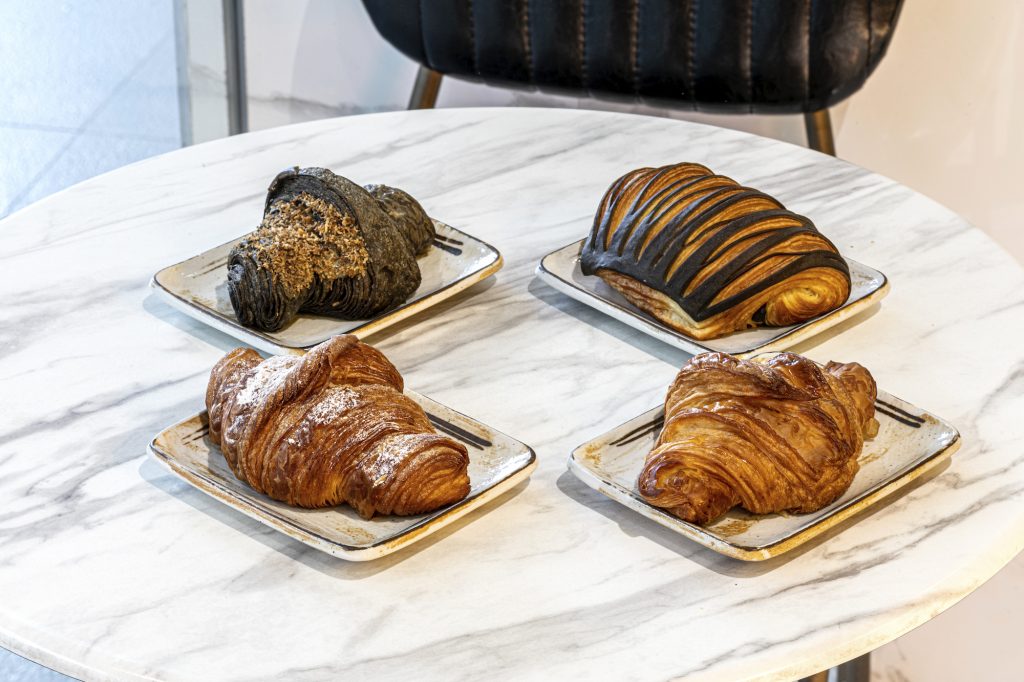
How important is design when it comes to brick and mortar businesses?
Design for a retail store is extremely crucial. The flow, the experience is what the customer is paying extra for. If you don’t give that experience, if you don’t give that vibe, it’s not worth coming to your place. Now a lot of people who pass by our shop, even from outside, take photos of the kiosk. It means that the design was able to catch their attention. You want to look presentable, unique, and approachable.
“If you really have no choice and need to open up a business to survive, start small and make sure there’s not much wastage. Keep it simple but unique and of quality,” says Myles Hontiveros.
What new consumer habits do you foresee in regard to coffee consumption and how are you preparing for this?
I believe quality is taken more seriously now. Because of the pandemic, more people have been brewing at home. This translates to: If they try our product, they will appreciate what we do more. It takes three days for us to make croissants and I hope people can taste the quality and value.
In BGC, the moving products are the signature lattes and sweetened drinks. Whenever people go out of their houses, they want to try something new and unique since coffee people can easily brew at their homes. They are more keen on trying things they can’t make at home.

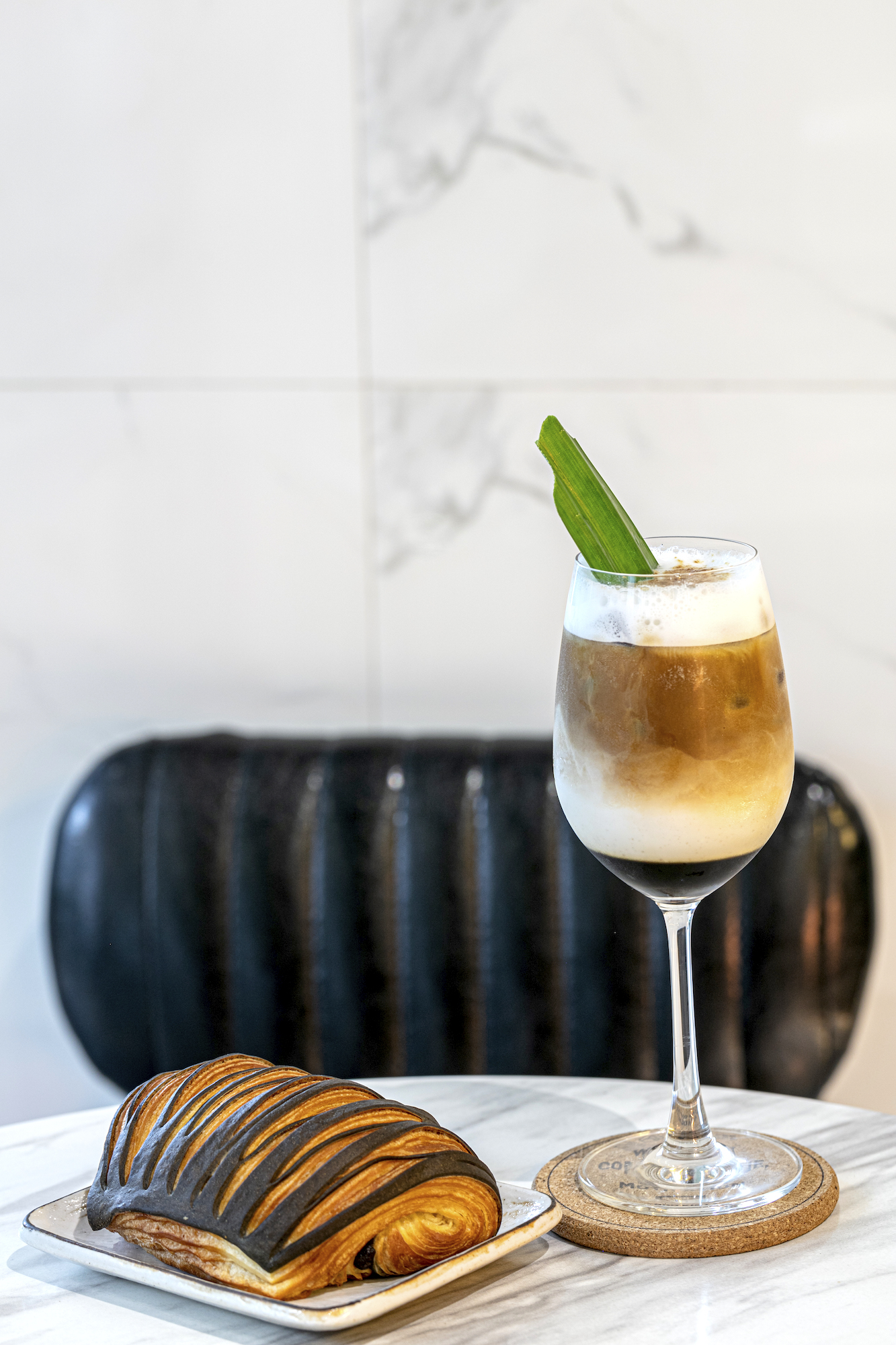
How do you envision the meaning of “cafe” in the post-pandemic world?
I hope that it will become three times better than it was pre-pandemic. I hope people open bigger places, and people will invest more. I believe the F&B industry will be elevated. People will be willing to pay a little more for better quality. Once this pandemic is over, people who are stuck at home with money saved up will eventually spend it on businesses that take quality seriously.
Any advice you can share to entrepreneurs navigating this crisis?
If you have only a limited budget, don’t open now. It’s really difficult to survive. I’ve seen many small businesses that tried to start but closed. Once tourism starts to open up, that may be a better time to start. If you really have no choice and need to open up a business to survive, start small and make sure there’s not much wastage. Keep it simple but unique and of quality.
The interview has been edited for brevity and clarity





